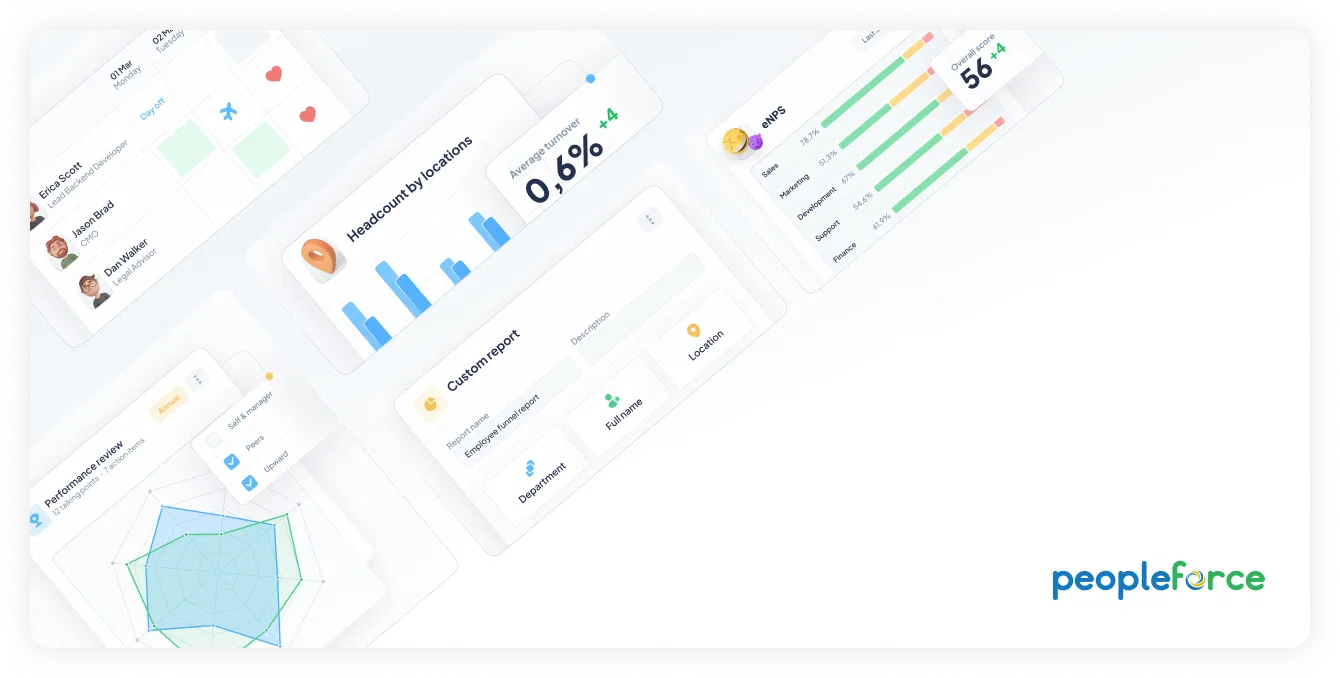
10 minutes about HR analytics
Let's say you know what HR metrics you want to apply to your work, but without an understanding of HR analytics, you won't get any further than calculating percentages of turnover rate. Metrics are important, but they are only a tool in the hands of your business. What if you need a plan first? Will you act at random or stick to the facts? Let's figure out how to get it right.
What is HR analytics?
HR analytics is part of a business analytics framework that uses data to ensure a seamless connection between human processes and strategic goals of an organization.
In simple words: look at metrics - improve employee performance - get a better return on business investment.
Essentially, HR analytics helps company officials get to the bottom of why things are the way they are within the team. It's how executives:
- Better understand workforce resources
- Assume what decisions the team can make
- Predict how those decisions will affect the business
In the network and between HR-specialists there are often disputes because of the substitution of concepts, because in addition to HR-analytics is also used People-analytics and Workforce-analytics. Is there a difference?
The difference between HR-analytics, People-analytics and Workforce-analytics
In practice, these terms are presented as interchangeable, but they are not the same thing.
HR analytics is a global concept that examines data from HR metrics and their impact on the business through the lens of employees. HR metrics are largely the responsibility of the HR department, which is why this type of analytics is relevant to our fellow HR professionals.
People-analytics also uses the results of HR metrics, but studies them in terms of employee decision-making. For example, it looks at how investments in competitive talent justify themselves, and helps you decide whether and how to continue investing in personnel.
When we talk about the above two types of analytics, we mostly mean full-time employees who come in, leave, make decisions, influence business development, etc. Workforce analytics also covers part-time employees, freelancers, project teams, volunteers, interns, outside consultants, and anyone else who ever interacts with the company. This type of analytics is responsible only for the internal "kitchen" of the company's workforce itself and is directed to make more deliberate decisions about the vectors of development of the team itself. The impact on business processes is taken into account superficially here - doing Workforce analytics, for example, we can understand if the company should switch to hybrid work mode, if more freelancers should be hired, which position requires close attention, etc.
All three types of analytics are really interrelated and are used to create a full-fledged HR strategy, which in turn affects business strategy.
There is also a fourth type of analytics, Talent analytics. It is responsible for making decisions about specific groups of employees that need to be developed within the company. This type is very similar to Workforce analytics; in fact, it is part of it. Here everything depends on the concept of "talent": in the Western HR space it implies any employee, but in this case it can be used as a "star" employee - one who aspires to more, and who is worth taking a closer look at.
Benefits of HR analytics for HR and business
Recruiting Assistance
Recruiting can become a tedious and costly process, especially if there is no evidence that there is a need for specific talent or certain hard and soft skills that increase the chances of high productivity.
Solution: HR analytics helps you understand what qualities candidates need, what candidates to look for, what to focus on, and how to weed out candidates at the start.
Help make decisions and support company development
To make decisions concerning clients, business development and expansion, work with new prospects and markets, it is necessary to be based on concrete figures about the condition of the company at the moment. This is necessary to know whether there are enough employees for all new strategic goals of the company, what is the state of staff, what is the current team climate and whether additional motivation is required taking into account new vectors of work.
Solution: HR-analytics provides all the necessary data in order to have a chance to track changes and promptly make adjustments to avoid burnout, overwork or desire to change project/sphere of employees (which may be associated with additional workload due to plans and ambitions of management).
Crisis Management Assistance
There are times when a company fails to keep up with tasks and team tracking, resulting in increased employee turnover and new layoffs. Responding to such challenges needs to be quick.
Solution: HR-analytics helps you reconsider whether in conditions of crisis and uncertainty the team can cope on its own without finding new employees, because it can be difficult to replace those who left. Sometimes internal recruiting and tracking "stars" and talent within a company helps not just save on recruiting, but also give people the challenges they need to overcome burnout. New horizons and promotions, transfers to a more appropriate position or project all help overcome boredom and the desire to leave. And new leaders in their positions are a rush of "fresh blood" and fresh solutions and a +1 to the employer's piggy bank.
Helping you manage your team in a timely manner
It's good if you don't have more than 20-30 employees, and you don't get tired of making sure everyone is comfortable and the work is progressing. Imagine what companies with thousands of talents on their staff are going to do? The entire business depends on properly collected data from HR metrics and subsequent decisions, because people are the main driving force.
Does HR analytics have disadvantages?
There are some, and they follow from the advantages. Let's take the last point and imagine that you really have >2000 employees. The metrics that are supposed to help you cannot be counted manually here - or you will need approximately the same staff of HR-specialists.
Problem: High volume of information.
Solution: HR-automation. Automated counting of metrics in real time helps professionals keep a hand on the pulse of the team literally at any second - especially if you need to quickly compile a report and understand what decisions can't wait.
But even with automation in place, questions remain: how to determine which metrics to focus on first, how to develop the system, maintain and improve research on the team and its impact on decision making?
Problem: Ensuring the development of data analytics within the company, the need to hire a specialist.
Solution: HRM-system with freelance support of specialists helps to solve "what to do", "how to count" and "what to do if I want to count a little differently". Usually, the HRM system support team develops and improves their product, so you have a good chance of getting regular HR analytics updates or even doing highly specialized queries for your business. This will help you focus only on learning about your company and team - the routine calculations the system will automatically do for you.
How to get started with HR analytics
- Determine the business issues you need to focus on by including a detailed breakdown of HR functions and the need for data to solve business problems.
- Identify metrics (metrics) that will drive results and improve HR functions to meet long-term goals.
- Bring in an analyst. Data scientists can track data quality and accuracy, help HR professionals apply the results to their department and business issues, and train employees on the intricacies of the HR analytics process.
- Purchase an HR analytics module or HRM system with this feature if you and your colleagues feel the need for quality assessments and want to save time.
- Use the reports to maintain a constructive dialogue with company management, to influence changes in personnel policy, to approve the budget, etc. Hold regular meetings where you present the results of the HR department's work, referring to the obtained data. In this way, employees can gradually adapt to the growth of analytics in the work culture.
What are the key HR metrics?
We talk about HR metrics in more detail in the article, but here is a brief selection of key metrics, the indicators of which are often used in HR-analytics. They are also often used in automated reporting in HRM systems.
Time to hire. This metric is also referred to as "time to hire," and it includes the time from first contact with the candidate until he or she is hired. The metric shows, among other things, the competence of the hiring team, because it displays how long it takes to conduct all the steps of the hiring.
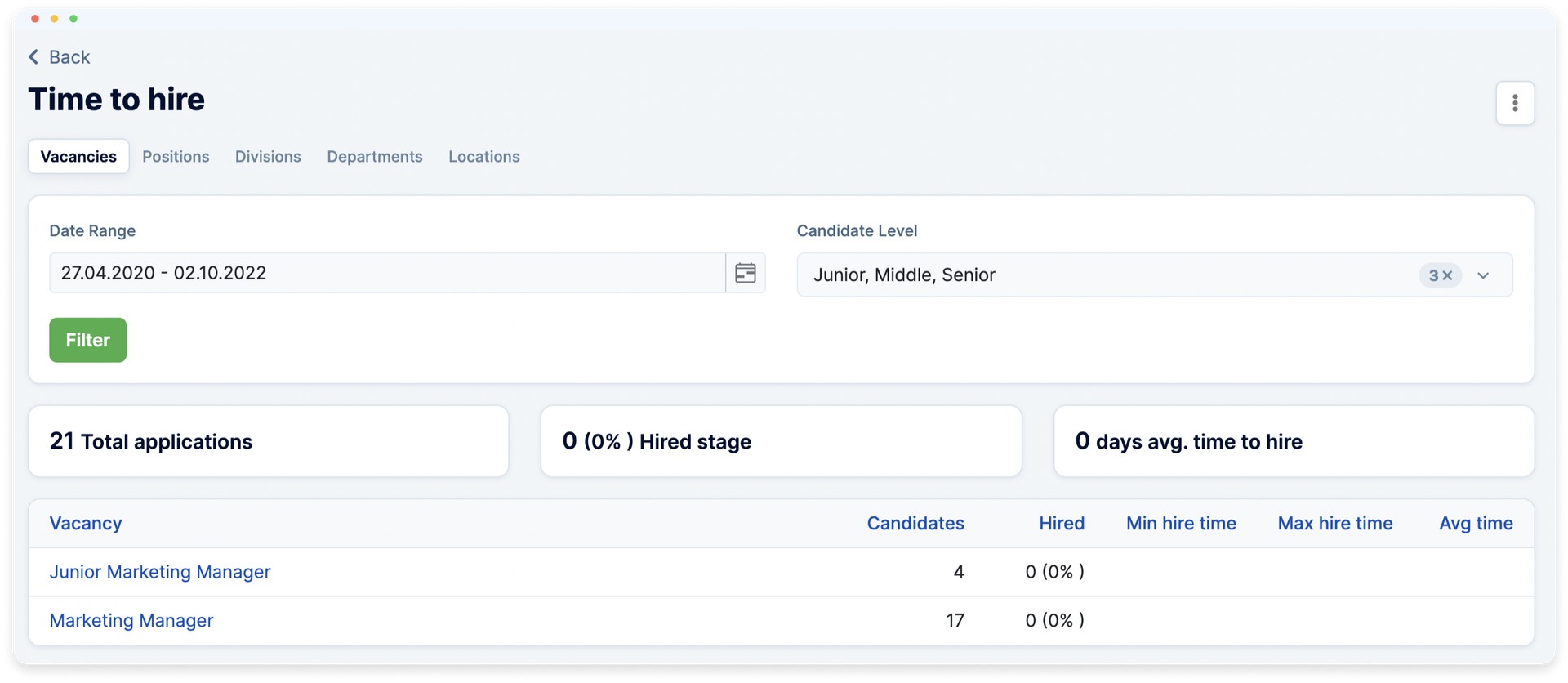
Hiring funnel. A metric showing the status of candidates for a particular job or jobs within a company.
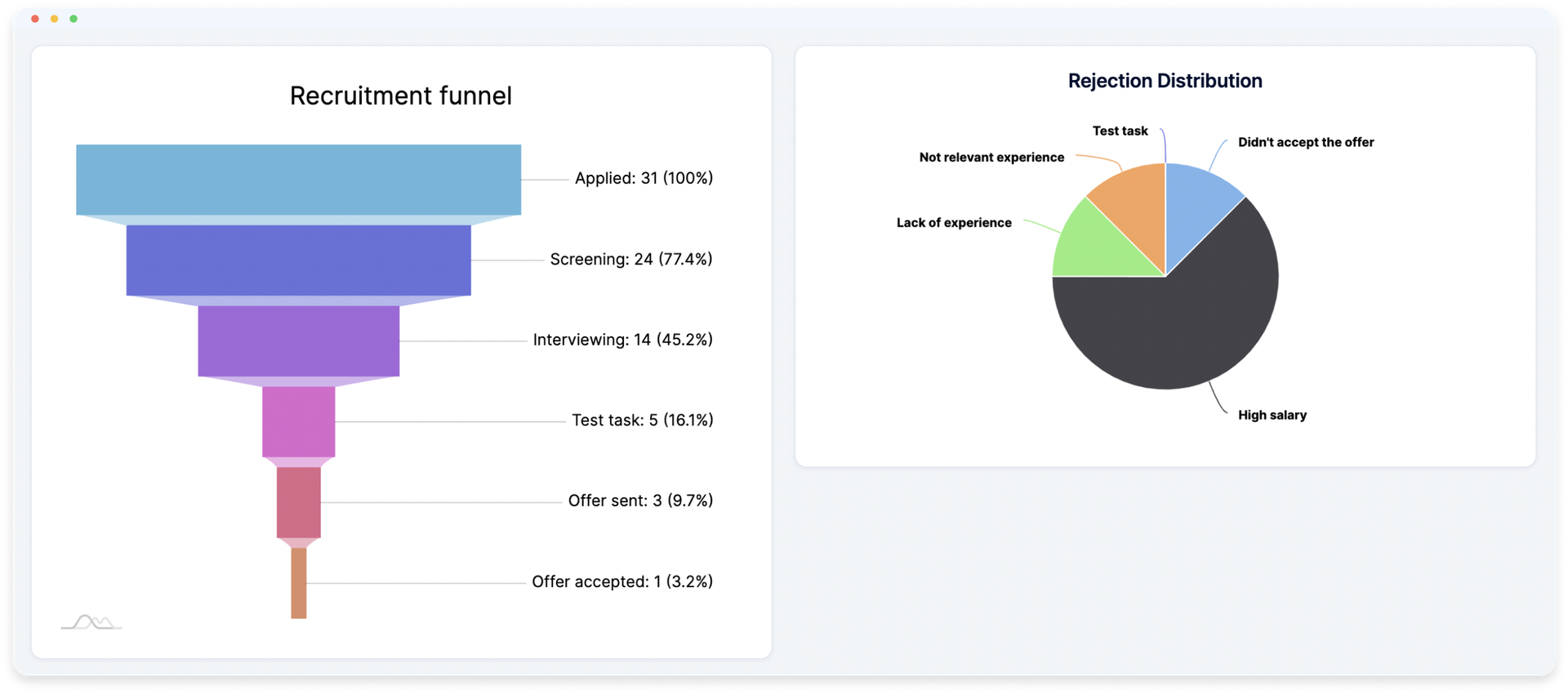
Staff turnover. The metric is counted by the number of people who left the company during a certain period, divided by the average number of employees during the same period, and multiplied by 100%. It is one of the main HR metrics, which allows you to quickly determine the company's climate and see critical conditions in the team.
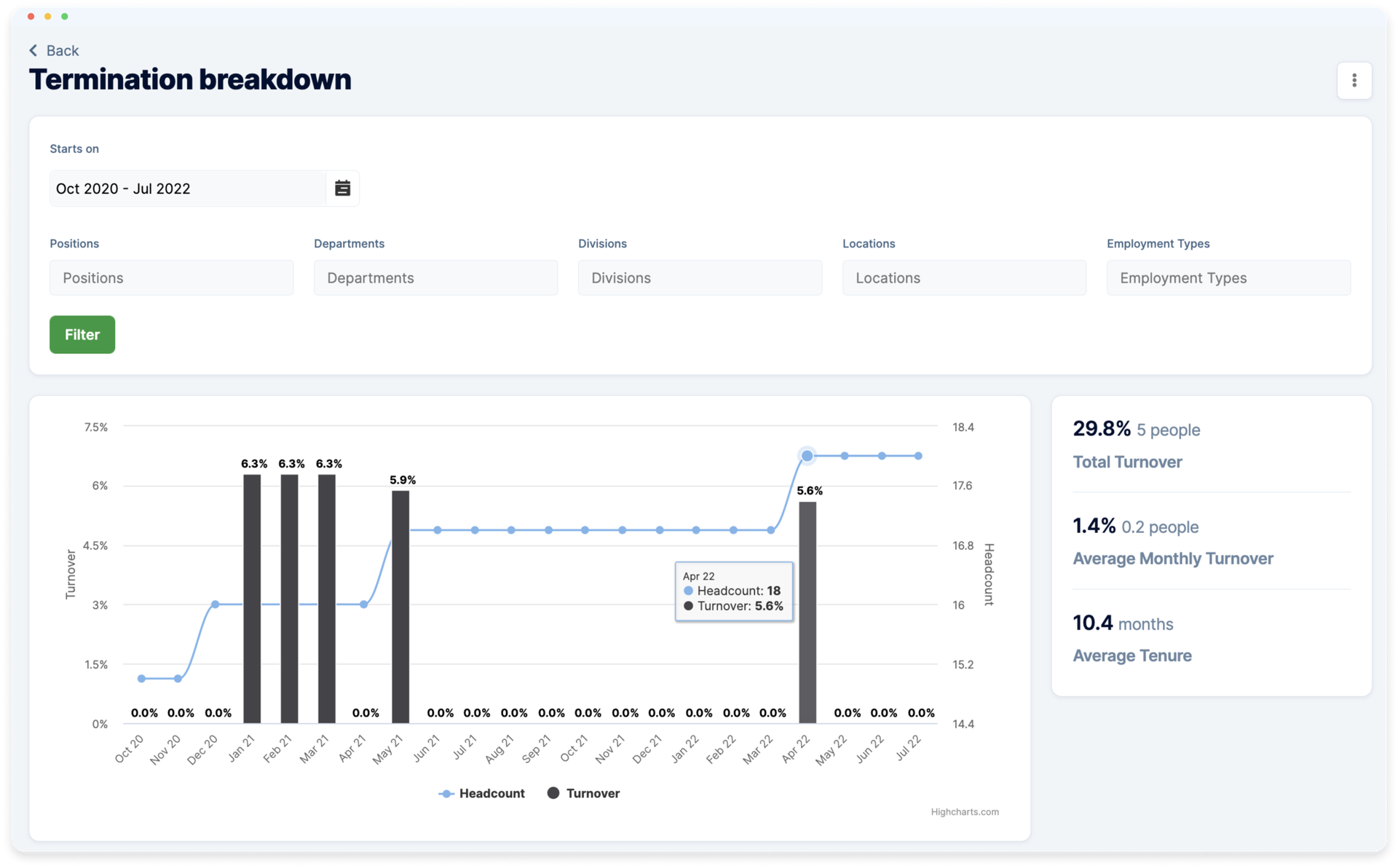
Efficiency and Potential. This metric is quite difficult to calculate, as HR professionals often debate how to properly count an employee's potential and productivity in the workplace over a period. There is a simple tool that helps in such a case: the n boxes matrix. It can be based on any indicators, including potential and efficiency, and show the correlation of employees' results on them. You can get these indicators during personnel evaluations.
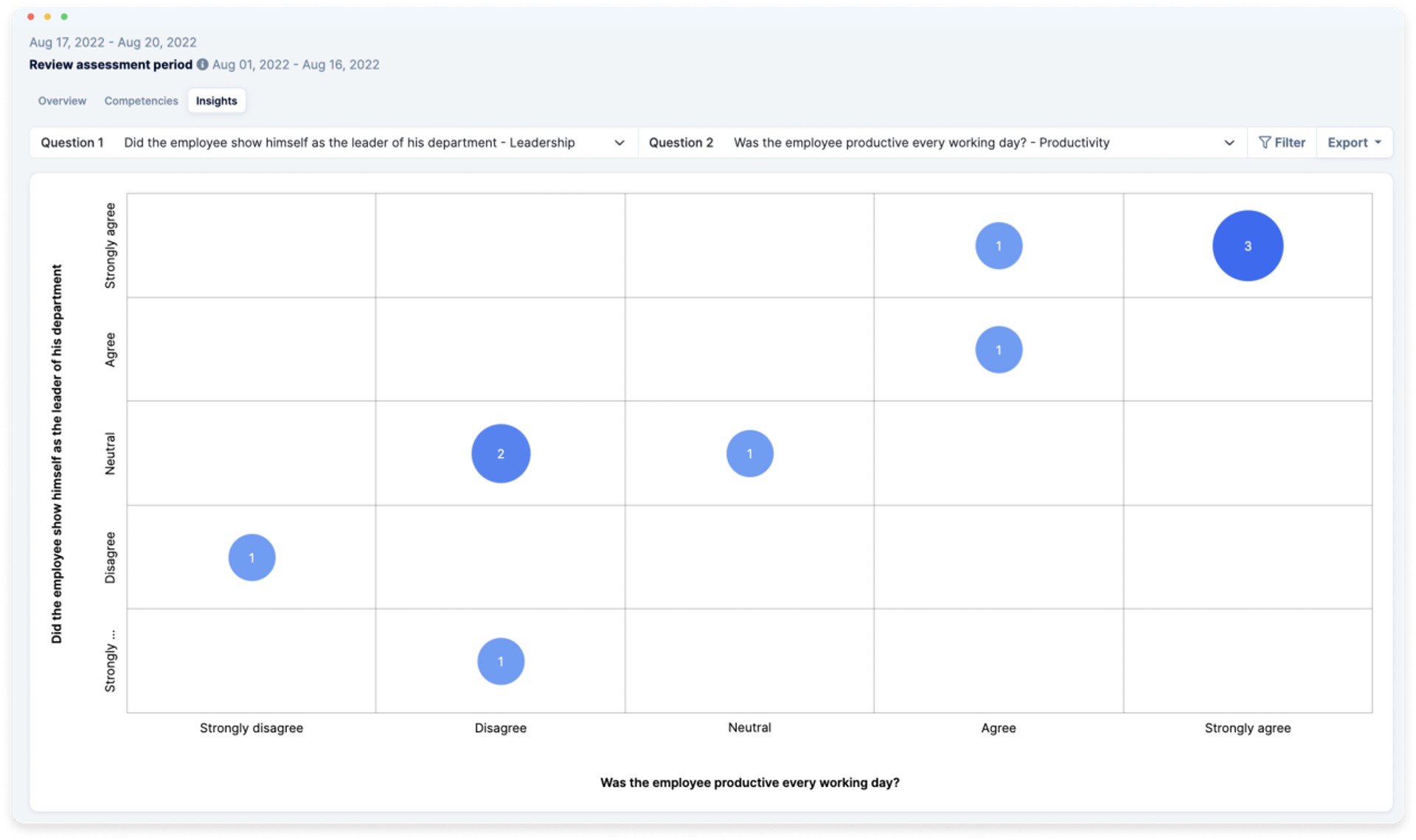
Leave requests. The indicators, the calculation of which consumes a lot of time for HR-specialists. The metric shows how many days off were taken by the employees during the period, what type of days off was used, etc.
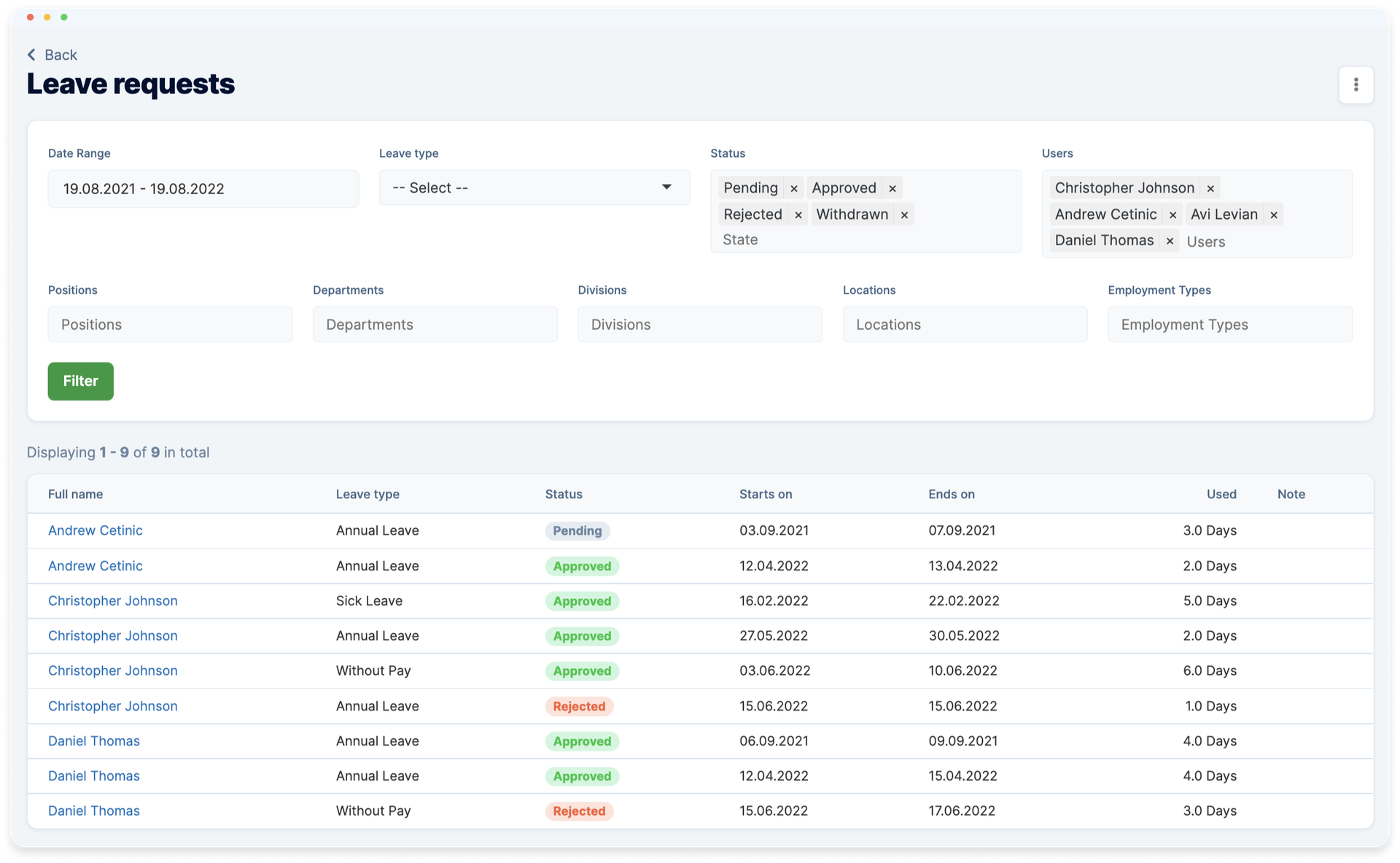
OKR. The number of active and closed goals of employees, time of their closing, progress on goals. Important metric for tracking productivity.
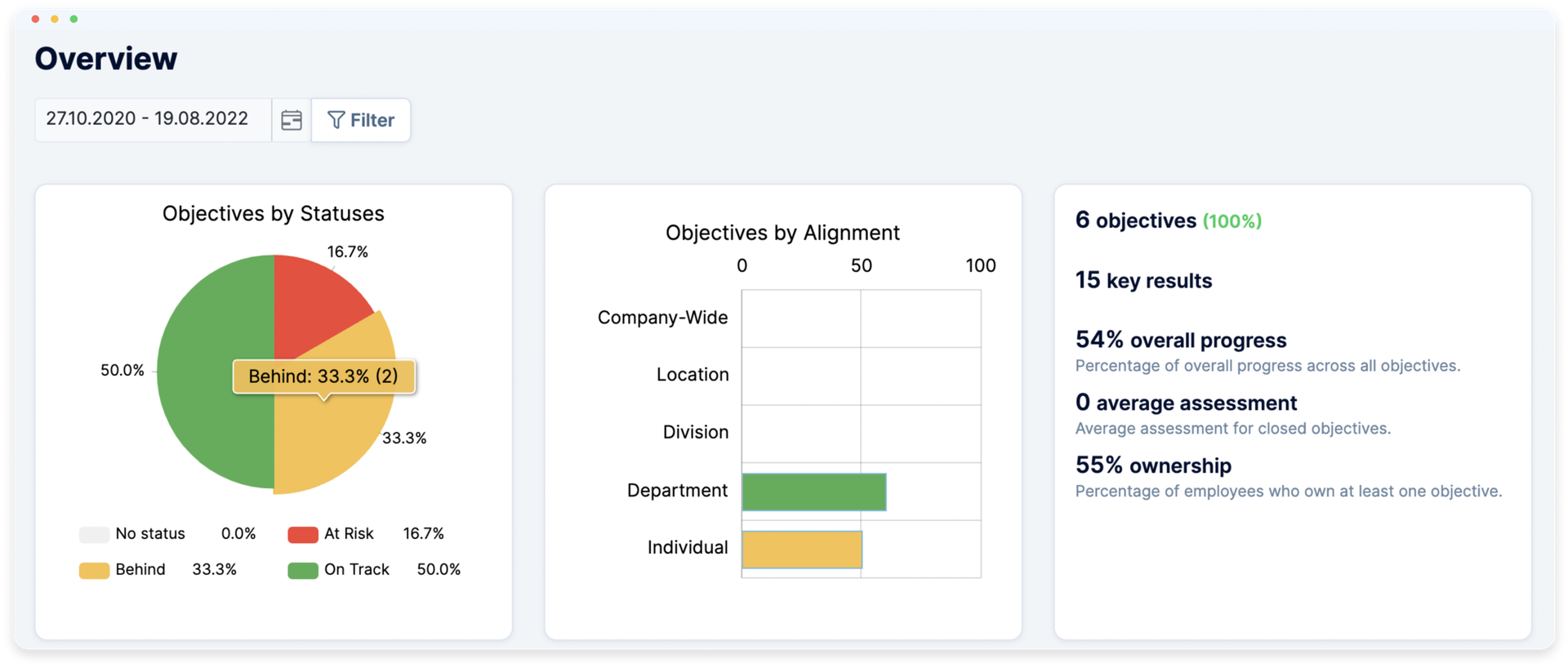
Advantages of using HR-analytics software
As with sampling the metrics HR professionals need to adequately work with the team and manage its performance, maintaining analytics takes time and dedication. If your company has the resources to hire an HR analyst, use him or her. But even if such an employee already works in the company, your task is to provide him with a convenient environment to work in, such as a module for HR-management to automatically perform calculations and display statistics.
- Usually, in modern HRM systems, it includes reports. Based on these reports, updated in real time, you can easily operate the data to make business decisions that depend on employee status. What are the other perks of HR software:
- You have several dozen (usually 30 or more) reports available to you, automatically updating data
- You can use the results of the reports for meetings or discussions - they are downloaded in convenient formats that are easy to print and show
- Using software, you can not only track changes in the team, but also predict its condition - and this is preventive measures in case of high turnover, burnout, etc.
- Such complicated metrics as efficiency and potential are quite expensive to calculate manually, so it is better to use assessment cycles, which are also available in HRM-systems.
Remember that saving time, nerves of your employees, and increasing their engagement and output - the responsibility for all this can be transferred to automated functionality, which will cost you approximately ± $30 per month. Investing a fairly modest amount of money can sometimes make a big difference - so when considering a modern HR analytics direction for work, budget accordingly - and enjoy automated counts, timely analytics, and convenient reporting that you don't have to worry about processing and displaying.
Get started with PeopleForce today
Automate your HR routine to create a high performance culture in your company. PeopleForce is your best HRM alternative to stay business driven but people focused.
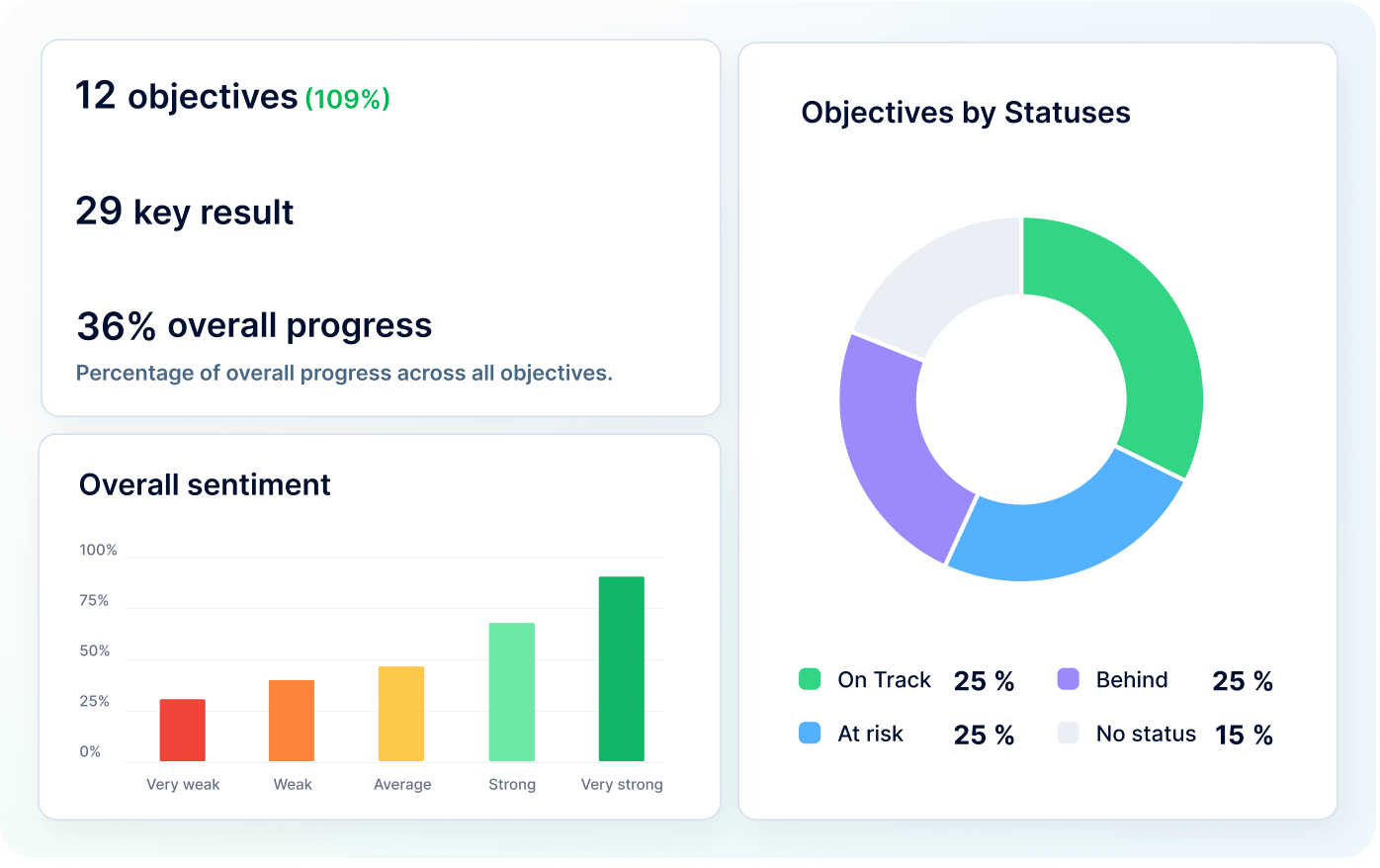
Recent articles
🎉 PeopleForce Wrapped 2025: a year of HR magic
2025 wasn’t just about shipping features — it was about making HR work better at scale. Let’s unwrap everything we built together.
OKRs vs. KPIs: Choosing the right framework
Unsure when to use OKRs or KPIs? Learn how to choose the right framework to maximize your team’s success.
Why OKRs feel like hell (and how to make them simple)
Why OKRs feel like chaos: missed goals, messy reviews, and burnout. Learn how to simplify goal-setting and reclaim clarity quickly.

